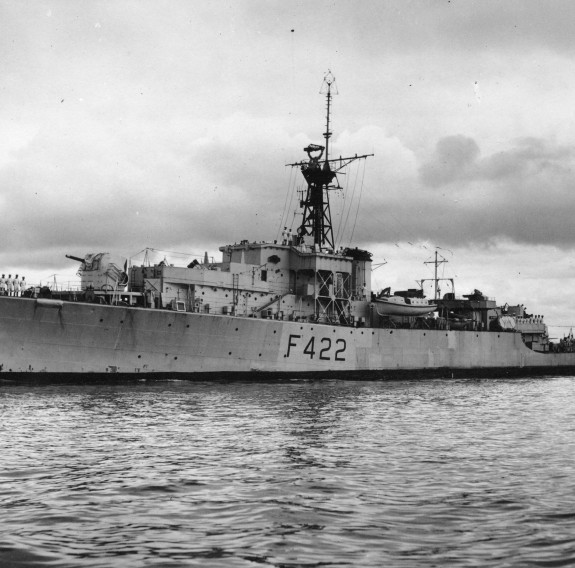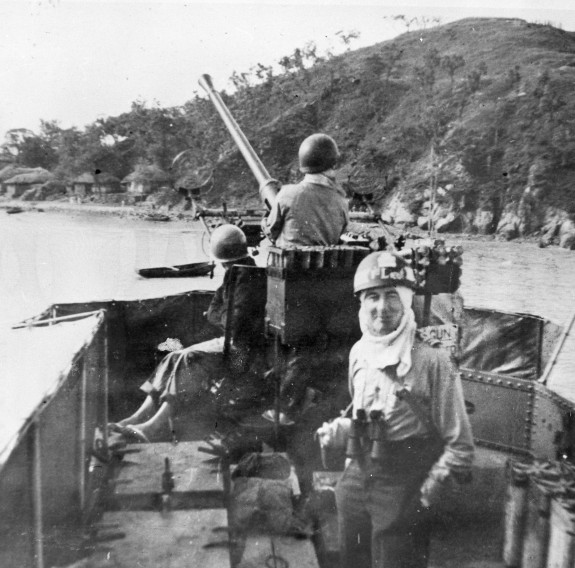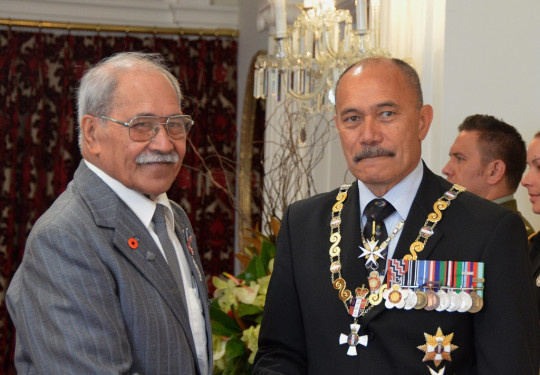Celebrating our veterans: Korean War
Jack Donnelly BEM interviews Korean War veteran Te Uranga O Te Ra Tuwhakairiora ‘Toti’ Tuhaka at the Gisborne RSA.
08 May, 2023
One might wonder how someone christened at the Porourangi Marae in 1935 by Sir Apirana Ngati, with the names Te Uranga O Te Ra (arrival of the sun) Tuwhakairiora (a Ngati Porou ancestor), could end up with the nickname of Toti or Totitoi, meaning to ‘limp along’. The story is that as a young boy, Toti was given the job of caring for his grandfather Turei, who walked with a permanent limp after a fall from his horse. Every day they could be seen limping together, and so the name Toti stuck to this day.
One day during his first year at Ruatoria High School the Navy recruiters arrived. “Who are they?” Toti said to a mate. “What are they talking about?” The boys had never ever seen a Navy warship. His mate said, “let’s join that Navy”.
Nine of the students went through to Gisborne on the back of a cream truck, squeezed among the cream cans. The recruiting office was part of the Gisborne RSA in those days. Toti and his mates sat the entrance exam but only Toti passed, and a few weeks later he received a letter saying he had been accepted to join the Royal New Zealand Navy. His bus trip to Auckland was a real “eye opener”, he says.
As a 15-year-old boy seaman, nine months on Motuihe Island, known as ‘the Rock’, was a harsh reality, but Toti enjoyed the tough discipline and comradery that the training brought to his life. He then drafted to cruiser HMNZS Bellona for sea training and to categorise the boys into specialist qualifications. Toti had no preference; he was selected to be a gunnery rate.
During the Korean War (1950-1953) Toti was drafted to Loch-class frigate HMNZS Hawea for a 12-month deployment.

HMNZS Hawea. Photo: RNZN Museum.

HMNZS Hawea patrols the Han River, Korea. Photo: RNZN Museum
Toti was a gunner loading the ship’s main armament, its four-inch gun. “I never worried too much about my safety whenever we went into action, my sole aim was to keep the gun firing.” He never knew whether they hit their targets, or the identity of their targets they fired on.
Their main mission was to patrol the Han River, offer Naval Gun Fire Support (NGFS) and to engage opportune shore targets when the occasion arose. He remembers the ship going up the Han River to shore-spot for the American battle ship USS Missouri.
They came under heavy fire from a shore battery, with shells falling all around them, sometimes only a few yards away. Hawea withdrew at full speed, zig-zagging from the area. Toti and his gun crew were helpless to do anything as their gun could not train beyond the safety arcs. “It was a horrific feeling that I felt, as we were so vulnerable for that period of time.” How their ship never got hit was a miracle, Toti says. “God must have been on our side that day.”
Back home on leave, Toti was cutting scrub on the hills when a local policeman found him. “Hey, Toti, you’ve been recalled back to the Naval Base immediately.” He was drafted to another Loch-class frigate, HMNZS Kaniere, to go back to Korea.
He remembers the freezing cold sub-zero weather conditions. Whenever they went onto the upper deck they had to keep the snow from forming on certain parts of their weapons. “As a more experienced gunner I was also required to take charge of the 40/60 Bofor close-range gun and teach the crew gun drill.”
Kaniere was on patrol and engaged against shore targets when the cease fire was declared. The ship continued on in a peacekeeping role until she returned home in March 1954.
You never get used to war, says Toti. “It’s something that remains with you forever. I am just so proud that I served and so grateful that I lived.”
When he left the Navy in 1958, he worked for the Gisborne Harbour Board as a diver (he had also been a ship’s diver in the Navy), then worked for the railway as an electrician specialising in tunnel lighting. A former shipmate, Brian “Brushes” Nolan asked Toti to join him in a diving job on Dutch dredge Formosa Prince which had come to Gisborne to dredge parts of the harbour. He took that on, but declined to go to Singapore with the dredge – his wife Teaaupare (Bena) was pregnant.
He has taught at both Gisborne Girls’ and Boys’ High Schools, Lytton High School, Waikirikiri School, Campion College and Wellington Girls’ College.
He’s helped trade school apprentices gain employment and as a member of Gisborne RSA has assisted ex-servicemen with their war pensions and allowances. He received the Queen’s Service Medal in the New Year Honours 2016.
Today, Toti enjoys going to the RSA with his daughter and carer Simone, where he has a beer, a meal, and a talk about his adventures. At home he is surrounded by his mokos who take loving care of their “pop”, a Navy veteran whose life has been a long and wonderful voyage.
